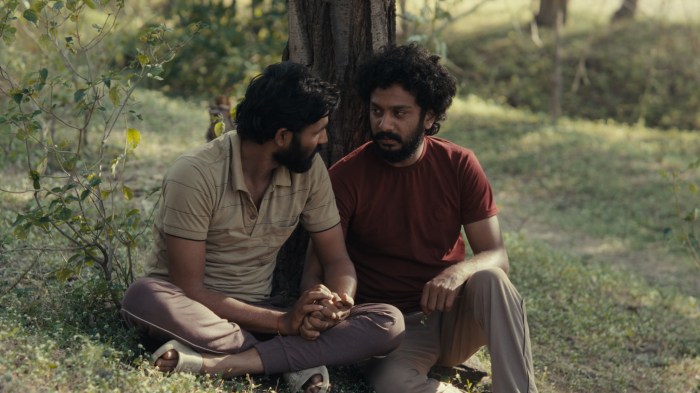
The creators behind a new documentary, "Decade of Fire," hope to set the record straight about the fiery destruction that displaced nearly a half-million people in the South Bronx during the 1970s.
When director Vivian Vázquez Irizarry was a child, she witnessed the rampant residential fires and rampant landlord abandonment that devastated more than 97 percent of buildings in several Bronx census tracts. She even lost her best friend, who vanished during a blaze that destroyed her home.
Now, after 10 years of work, she and co-director Gretchen Hildebran are finally screening the film, which blames systematic failures for the South Bronx’s desolation.
It is playing in New York City before heading across the nation, with a theatrical opening that is set for May 3 with screenings through May 9 at Metrograph. We spoke with both Vázquez Irizarry, who also works with youth in the South Bronx, and Hildebran about their documentary and the "cold case" they hope to close about the fires.

How are you setting the record straight?
VVI: The narrative about South Bronx has always been that the people of the South Bronx burned it. In our research, what we find is that the South Bronx was a place that was neglected and abandoned and its people were neglected and abandoned and moved unjustly by racist and discriminatory practices. We were blamed for destroying it, but in fact, we didn’t. Our parents and grandparents did not come from Puerto Rico to have their apartments catch on fire.
The thing I think had me turn a corner [to do the documentary] is when I realized I wanted to let the people of the South Bronx know that it wasn’t our fault. We have the legacy that we did this to ourselves. So at least now people in the South Bronx know there were other forces we could not see that really played a role in destroying our lives.
Would you say many people in the community still have this on their minds?
VVI: My son Antonio, as we were working on the film, told me one day that it was like a shadow has been cast over South Bronx and people don’t know why the shadow is there. In 10 years, we’ve spoken to so many community people who want to tell their stories … it’s very emotional and very spiritual.
For awhile, those of us who went through that time, we put it in the back of our minds. But as we’re bringing it up again, people are just clamoring to tell their own stories. The trauma is always there and when it comes out, it starts to flood.
For me, in the process of making the film, some moments (of our uncovering certain things), I didn’t want to go there. I didn’t want to confront the real injustice of redlining or (President) Reagan. I wouldn’t want to go there, because I am tough — I am from South Bronx. I don’t want anyone to see me vulnerable. It’s the South Bronx attitude. But, I needed to confront the pain. As the filmmaker here and the subject, it was a reckoning.

GH: This is meant to give people something to hang it on and understand why and fight back against it … basically to help them carry the Bronx with pride.
It is part survival to get through everything, but a silence that has come after the fact — we’re not going to talk about it or look back at what happened. There is a sense of guilt and shame, wrongly so, but because of that, we can’t go back to that and talk about how much trauma people experienced.
Your documentary makes it clear that the Bronx was forgotten time and time again … do you still believe that is the case?
GH: For many years, development wasn’t happening in the Bronx, it was happening through nonprofits, but it was not considered prime territory for market-rate development, but that has changed significantly since the financial crisis. What we have heard from our community partners is that developers look at how much they can make per square foot. Property values were suppressed by neglect, and redlining created a situation of neglect. It was no accident that the redlined areas are being targeted for market-rate development.
VVI: Since the 1990s, the South Bronx has been rebuilt, and structurally, you see park space and see trees. But the South Bronx still suffers from housing injustice – people are still struggling to pay rent and you hear reports of tenants being harassed by landlords and getting unlawfully evicted from apartments, but the façade looks like it is all put together. When you take out the layers, you notice people still struggling for a place to live.
Our educational institutions are still failing our kids and we are still lacking access to equal opportunities to jobs, education and healthcare. We lacked those services back then. We just want equal access like anyone else.

The documentary includes a section about the community coming together to rebuild with no other support. Can you talk about the importance of including that?
GH: We envisioned the documentary as a people’s history of this story. People weren’t just experiencing traumas but responding and doing what they needed to survive. When landlords were leaving and when they had the realization that the city wasn’t going do anything to help them, they realized "We’re it — we have to do this ourselves." There is a lot of power in that because there was a vacuum of anything else happening.
These are unsung heroes. I’ve lived in New York City buildings and it is hard enough to meet your neighbors and agree to something. We are interested as filmmakers in lifting up those stories.
Where do you want to see your community in the next 10 years?
VVI: We need to see the community thrive in different ways and see the community as a partner in the way that they want to live. I want them to live in dignity and have potential without worrying about why they don’t have access to good college or school or financial aid.
I would like the people of the South Bronx to have a greater voice and power over the decisions made in their neighborhoods — to have true power over the homes, their land, their kids’ education, their health care, their parks and their churches — that’s what I would like to see.















